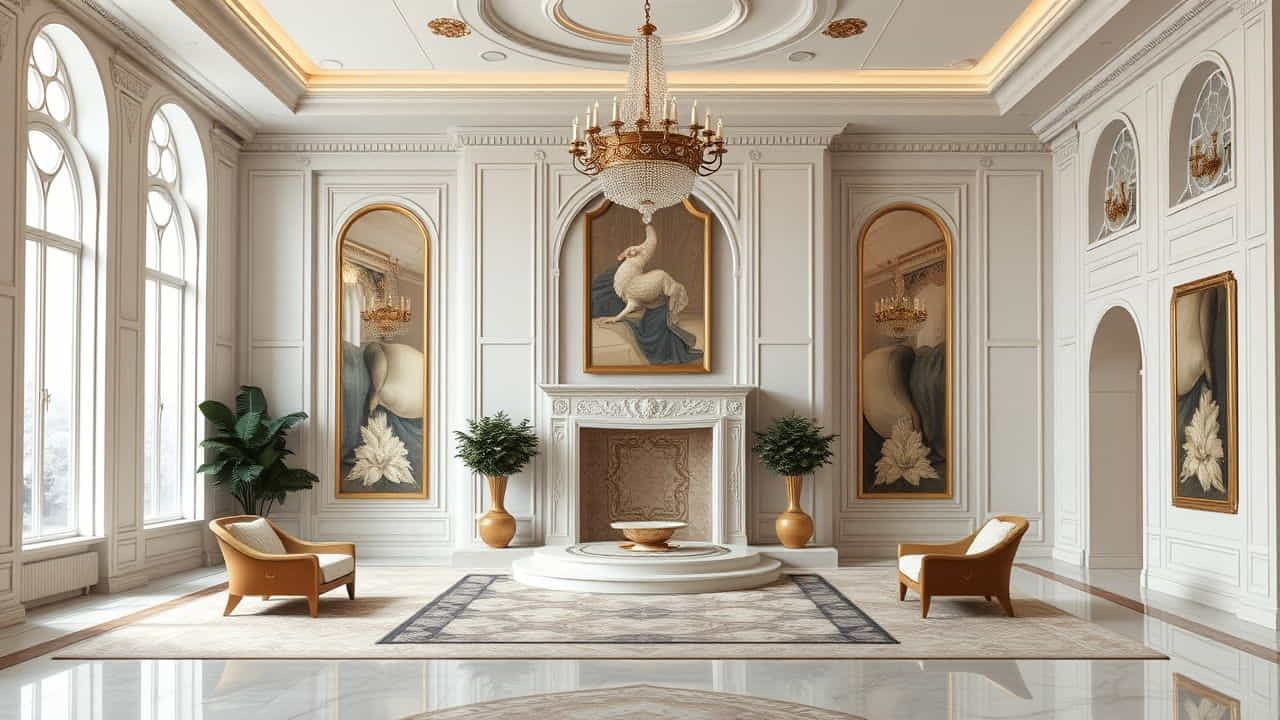A palatial château is a grand and luxurious estate, often associated with European aristocracy, royalty, and historical significance. These magnificent structures are known for their imposing architecture, lavish interiors, and extensive landscapes. Found primarily in France and other parts of Europe, palatial châteaux serve as symbols of wealth, power, and refined taste.
In this topic, we will explore the definition, architectural elements, historical significance, and enduring appeal of palatial châteaux.
What Is a Palatial Château?
A palatial château is a large and opulent castle or manor house, typically built as a residence for nobility or monarchy. The word châteauâ is French for castle,â but in architectural terms, it refers to grand country estates rather than medieval fortresses. The term palatial” emphasizes the luxurious and regal nature of these structures, often featuring elaborate decorations, expansive gardens, and intricate facades.
These estates were originally built as symbols of prestige, showcasing the wealth and influence of French lords, kings, and nobles. Today, many châteaux have been preserved as historic landmarks, luxury hotels, or private residences.
Key Architectural Features of a Palatial Château
1. Grand Facade and Ornate Exterior
Palatial châteaux boast impressive exteriors with:
-
Intricate stonework and carvings
-
Towering spires and turrets
-
Large windows with decorative moldings
-
Majestic entrances with grand staircases
These features give the château a regal and imposing presence, making it a visual masterpiece.
2. Expansive Layout and Multiple Wings
Unlike traditional castles, palatial châteaux have expansive layouts with multiple wings, often designed in a symmetrical fashion. The vast interiors include:
-
Lavish ballrooms
-
Spacious banquet halls
-
Elegant salons and libraries
-
Numerous bedrooms and guest suites
This design ensures that the château can accommodate large gatherings, royal functions, and extended families.
3. Elaborate Rooflines and Towers
Most palatial châteaux feature ornate rooflines with steep gables, dormer windows, and decorative chimneys. Some also include towers or turrets, reminiscent of medieval castles but with a more refined and artistic touch.
4. Luxurious Interiors with Fine Detailing
The interiors of palatial châteaux are known for their extravagance and artistry. Some of the most common interior features include:
-
Gold-leaf detailing on ceilings and walls
-
Hand-painted frescoes and murals
-
Crystal chandeliers and grand staircases
-
Hand-carved wood paneling and marble floors
These elements create a majestic atmosphere, reflecting the château’s noble heritage.
5. Extensive Gardens and Landscaping
A defining feature of a palatial château is its expansive gardens, often designed in the French formal garden style. These gardens include:
-
Symmetrical layouts with trimmed hedges
-
Fountains, sculptures, and reflecting pools
-
Flower beds arranged in artistic patterns
-
Tree-lined pathways leading to scenic viewpoints
These gardens were designed not only for beauty but also as a statement of wealth and artistic vision.
The History of Palatial Châteaux
1. Origins in the French Renaissance
The concept of the palatial château emerged during the French Renaissance (15th-17th centuries). Inspired by Italian architecture, French nobles began constructing elegant country estates that combined medieval fortification elements with Renaissance luxury.
2. The Golden Age of Châteaux (17th-18th Century)
The height of château construction occurred during the reigns of Louis XIII, Louis XIV, and Louis XV, when France’s elite built extravagant estates. This period saw the creation of some of the most famous châteaux, including:
-
Ch̢teau de Versailles РThe ultimate symbol of royal opulence.
-
Ch̢teau de Chambord РKnown for its stunning French Renaissance architecture.
-
Ch̢teau de Fontainebleau РA residence of kings for centuries.
3. The Decline and Transformation of Châteaux
After the French Revolution (1789-1799), many aristocratic families lost their châteaux, and some estates were abandoned or repurposed. However, in later centuries, these estates found new life as museums, luxury hotels, and cultural landmarks.
Famous Palatial Châteaux Around the World
1. Château de Versailles (France)
Perhaps the most famous château in the world, Versailles was transformed by King Louis XIV into a masterpiece of Baroque architecture. It features the Hall of Mirrors, vast gardens, and stunning royal apartments.
2. Château de Chambord (France)
This château is renowned for its unique blend of Gothic and Renaissance styles, with an intricate double-helix staircase and over 400 rooms.
3. Château de Chenonceau (France)
Built over the River Cher, this château is known as the “Ladies’ Château” because of its association with influential women like Catherine de’ Medici and Diane de Poitiers.
4. Neuschwanstein Castle (Germany)
Although not technically a château, Neuschwanstein Castle embodies the same grandeur. Built by King Ludwig II of Bavaria, it inspired Disney’s Sleeping Beauty Castle.
5. Linderhof Palace (Germany)
A smaller but equally grand residence, Linderhof Palace is known for its ornate interiors, gardens, and fountains, making it one of Germany’s most stunning estates.
Why Palatial Châteaux Continue to Inspire
1. Architectural Beauty and Timeless Elegance
The sheer grandeur and craftsmanship of palatial châteaux make them some of the most admired buildings in the world. Their designs continue to influence modern architecture and luxury homebuilding.
2. Cultural and Historical Significance
Many châteaux are preserved as UNESCO World Heritage Sites, drawing visitors who want to experience their rich history and artistic excellence.
3. Luxury Living and Modern Adaptations
Some historic châteaux have been converted into high-end resorts, wedding venues, and private residences. Their lavish aesthetics and exclusivity make them highly desirable.
A palatial château is more than just a grand estateâit is a symbol of history, luxury, and artistic excellence. With their ornate designs, sprawling gardens, and rich cultural significance, these magnificent homes continue to captivate visitors, architects, and historians alike.
Whether you are admiring their beauty, exploring their history, or dreaming of owning one, the timeless elegance of a palatial château will always remain a hallmark of architectural grandeur.
“
